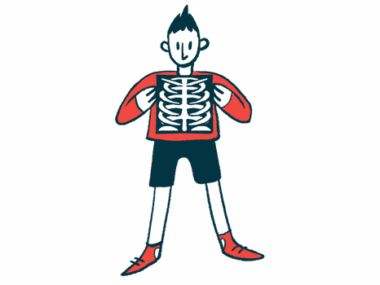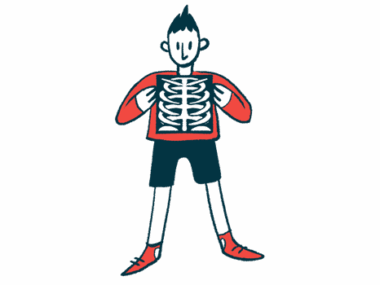Low bone mineral density prevalent in older children with SMA: Study
Study from China recommends early, regular testing of bone health in SMA
Written by |

Low bone mineral density (BMD), which leaves bones weak and prone to fractures, was found to be prevalent among children with spinal muscular atrophy (SMA) in China in a recent report.
Older age, especially beyond a cut-off of 6.3 years, was associated with a higher likelihood of having low BMD among the children.
Researchers indicated their findings, in children who did not receive any disease-modifying treatments, may be “applicable for guiding bone care in patients with SMA…. We believe that BMD should be assessed as early as the diagnosis of SMA is completed, or beyond this age cut-off value, and monitored at regular intervals.”
The study, “Low bone mineral density and its influencing factors in spinal muscular atrophy without disease-modifying treatment: a single-centre cross-sectional study,” was published in BMC Pediatrics.
Children with SMA at risk for poor bone health, orthopedic issues
Children with SMA, a neuromuscular disease characterized by muscle weakness and wasting due to mutations in the SMN1 gene, are at risk for poor bone health and orthopedic issues.
Nearly all SMA patients develop scoliosis, an abnormal curvature of the spine, and hip dislocations and joint problems are common.
Moreover, patients are susceptible to low BMD, where a lack of important minerals in the bones, such as calcium and phosphorus, leaves them fragile and fracture-prone.
Coupled with existing motor disabilities, bone problems in SMA can significantly inhibit patients’ ability to participate in daily life activities and reduce their life quality.
As such, recent guidelines have placed an emphasis on monitoring bone health in SMA patients, according to the researchers. There’s also a need to better understand the factors that contribute to low BMD in this population.
In the recent study, the scientists measured BMD with a type of imaging scan called quantitative computed tomography (QCT) among a group of 66 children with SMA types 1-3 who were seen at a hospital in China and who did not receive any disease-modifying treatments.
About a quarter of the children (25.8%) were considered short in stature, and a little over a third were underweight (34.8%). Moreover, 45.5% had scoliosis, and 37.9% had hip dislocations.
About 82% of children found to have low vitamin D levels
The majority of children (81.8%) were found to have lower-than-normal blood levels of vitamin D, which plays an important role in bone health, while 60.6% were considered vitamin-D-deficient.
QCT scans showed the mean BMD in the lower spine was low in children with SMA relative to the mean observed in healthy children.
Overall, 28.8% of the patients, or 19 of 66 children, were considered to have low BMD, while the remaining 47 children had normal BMD.
By SMA type, 7.1% of children with SMA type 1 had low BMD (1 of 14 children), as well as 35.1% of those with SMA type 2 (13 of 37 children) and 33.3% with SMA type 3 (5 of 15 children).
Age was found to be the only clinical factor that significantly linked to the likelihood of having low BMD, with older age correlating with lower BMD. In additional analyses, the researchers identified an age cut-off of 6.3 years as being predictive of having a low BMD.
“It is not unexpected” that age would be a contributing factor to poor bone health, according to the researchers. “SMA children may not be able to increase bone mass through exercise and physical activity compared to healthy children, leading to a progressive bone mass deficient state.”
Overall, “regular BMD monitoring is necessary for all types of SMA children, especially those aged ≥ 6.3 years … so that early diagnosis and appropriate intervention can be planned to prevent the complications related to low BMD,” the team wrote.
The researchers indicated a strength of their own study relative to other reports on BMD in SMA is the use of QCT, which may be able to more accurately measure bone involvement than other techniques commonly used in clinical practice.
Still, they noted that larger future studies accounting more thoroughly for all clinical factors that could influence bone health, such as diet and use of calcium or vitamin D supplements, will be needed to confirm the findings.








